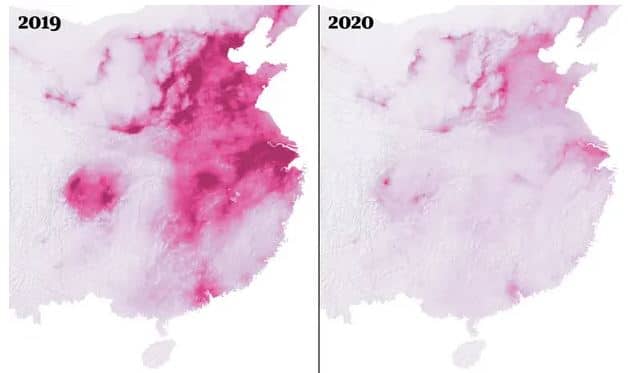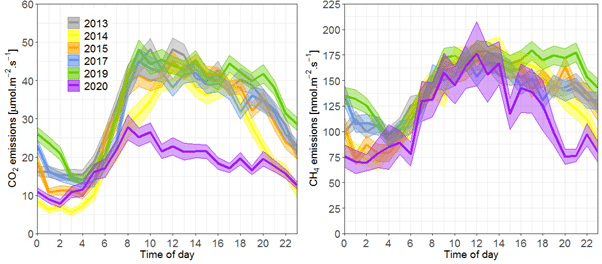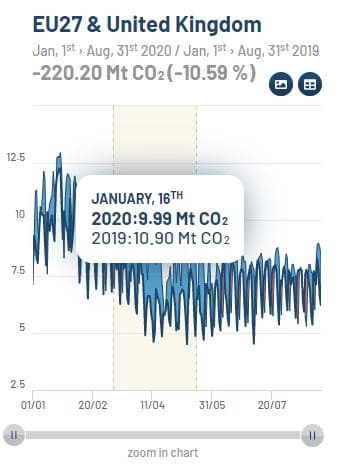
The Guardian article: Coronavirus pandemic leading to huge drop in air pollution, 23rd March 2020
Readings from ESA’s Sentinel-5P satellite show that in March, levels of nitrogen dioxide (NO2) over cities and industrial clusters in Asia and Europe were markedly lower than in the same period last year.
Nitrogen dioxide is produced from car engines, power plants and other industrial processes and is thought to exacerbate respiratory illnesses such as asthma.
While not a greenhouse gas itself, the pollutant originates from the same activities and industrial sectors that are responsible for a large share of the world’s carbon emissions and that drive global heating.

BT Tower measurements show London’s CO2 emissions have fallen almost 60% during lockdown

The atmospheric observatory at the top of the 190m-tall BT Tower is ideally placed to measure the changes in greenhouse gas emissions in London as a result of the COVID-19 lockdown. It reveals there has been an average daytime reduction of almost 60 per cent in carbon dioxide emissions.
https://www.ceh.ac.uk/news-and-media/blogs/london-co2-emissions-fallen-60-percent-lockdown
Carbon Monitor
Carbon dioxide (CO2) emissions from the use of fossil fuels and the production of cement are the main driving force of climate change. Carbon Monitor is an international initiative providing for the first time regularly updated, science-based estimates of daily CO2 emissions. The data reveal the drop and re-growth of emissions during the COVID-19 pandemics.

Temporary reduction in daily global CO2 emissions during the COVID-19 forced confinement
Government policies during the COVID-19 pandemic have drastically altered patterns of energy demand around the world. Many international borders were closed and populations were confined to their homes, which reduced transport and changed consumption patterns. Here we compile government policies and activity data to estimate the decrease in CO2 emissions during forced confinements. Daily global CO2 emissions decreased by –17% (–11 to –25% for ±1σ) by early April 2020 compared with the mean 2019 levels, just under half from changes in surface transport.